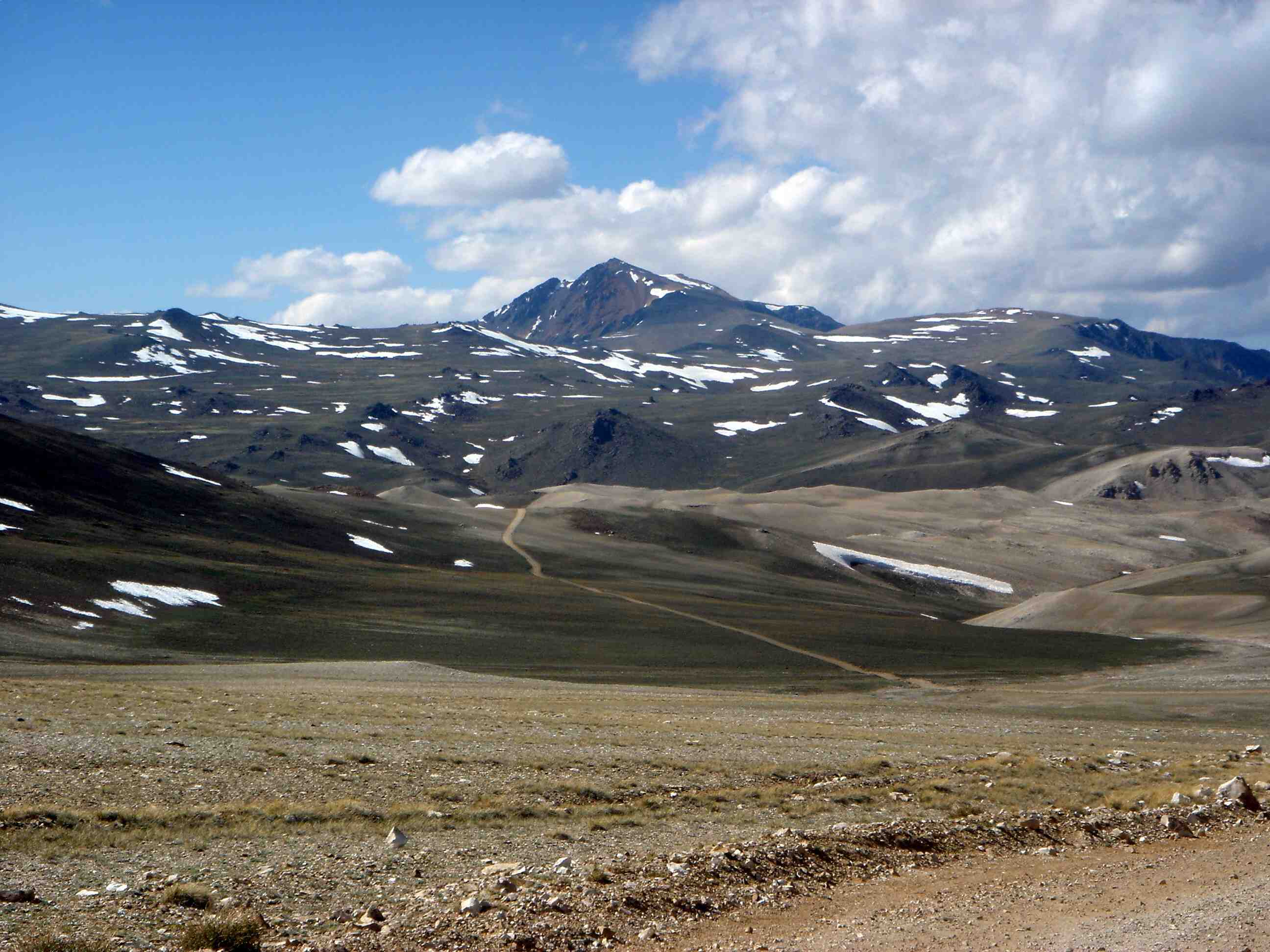
The Alpine climate is renowned for its stunning mountainous landscapes and unique weather patterns. Situated in high-elevation regions around the globe, these areas experience distinct climatic conditions that set them apart from other regions. From freezing temperatures and heavy snowfall to breathtaking scenery and unique flora and fauna, the Alpine climate offers a fascinating glimpse into the power and beauty of nature. In this article, we will delve into the world of the Alpine climate and explore ten intriguing facts that make this climate type so special. Whether you’re a nature enthusiast, a geography buff, or simply curious about our planet’s diverse climates, these fascinating facts will surely captivate your interest. So, let’s embark on a journey to discover the wonders of the Alpine climate!
Key Takeaways:
- Alpine climate is known for extreme temperature variations, heavy snowfall, and diverse wildlife. It plays a crucial role in water resource management and influences regional weather patterns.
- The beauty of alpine climate is best experienced in person, attracting outdoor enthusiasts with stunning landscapes and unique ecosystems. Conservation efforts are crucial to protect these vulnerable environments from climate change.
The Alps are home to some of the highest peaks in the world
The alpine climate is predominantly found in mountainous regions, particularly in the Alps. This region is renowned for its towering peaks, with the highest being Mount Everest. These majestic mountains not only offer spectacular views but also create a distinct climate that is characteristic of alpine regions.
Alpine climate is known for its extreme temperature variations
One of the defining features of the alpine climate is its wide temperature fluctuations. During the day, temperatures can soar to scorching highs, while at night, they plummet to freezing lows. This stark contrast can make for challenging and unpredictable weather conditions.
Alpine regions receive abundant snowfall
Thanks to the cold temperatures and moisture-laden air, alpine climates experience heavy snowfall. These snow-covered landscapes create a winter wonderland and provide ample opportunities for winter sports and activities.
Alpine vegetation is uniquely adapted to survive harsh conditions
The plants and vegetation found in alpine regions have evolved to withstand the extreme conditions. They are often low-lying and compact, with adaptations such as hairy leaves and deep root systems to minimize water loss and absorb nutrients from the rocky terrain.
Alpine climate is home to diverse and resilient animal species
Despite the harsh environment, alpine climates support a wide range of animal species. From mountain goats and ibexes to elusive snow leopards, these animals have adapted to the rugged terrain and have unique characteristics to thrive in these challenging conditions.
Alpine climate plays a crucial role in water resource management
Alpine regions act as water towers, providing a significant source of freshwater to downstream areas. The melting snow and glaciers contribute to the formation of rivers and lakes, serving as vital resources for agriculture, energy production, and drinking water.
Alpine climate is a paradise for outdoor enthusiasts
With its stunning landscapes and diverse ecosystems, alpine regions attract outdoor enthusiasts from around the world. Activities such as hiking, skiing, mountaineering, and wildlife exploration are popular amongst those seeking adventure and a closer connection with nature.
Alpine climates are vulnerable to the impacts of climate change
As global temperatures rise, alpine regions are experiencing significant changes. Glaciers are melting, leading to a reduction in freshwater resources, and the delicate balance of ecosystems is being disrupted. Conservation efforts and sustainable practices are crucial to protect these vulnerable environments.
Alpine climate influences regional weather patterns
The unique topography and atmospheric conditions of alpine regions can have a significant impact on local weather patterns in adjacent areas. The interaction between the mountains and the prevailing winds can result in the creation of microclimates and variations in rainfall distribution.
The beauty of alpine climate is best experienced in person
No words or pictures can fully capture the magnificence of alpine climates. The breathtaking views, crisp air, and the sense of awe created by these majestic landscapes can only be truly appreciated by visiting and immersing oneself in the beauty of these remarkable regions.
Conclusion
In conclusion, the alpine climate is a fascinating and unique climate that is found in high-altitude regions around the world. With its extreme temperatures, strong winds, and diverse flora and fauna, it presents a challenging environment for both humans and wildlife. The alpine climate is not only significant for scientific research and ecological studies but also offers breathtaking landscapes and recreational opportunities for outdoor enthusiasts. The adaptation strategies of plants and animals, as well as the impact of climate change on alpine regions, further add to the intrigue of this climate type. Whether you are an avid hiker, a nature lover, or a climate enthusiast, exploring the wonders of the alpine climate is sure to be an awe-inspiring experience.
FAQs
Q: What is an alpine climate?
A: An alpine climate is a high-altitude climate typically found in mountainous regions characterized by cold temperatures, strong winds, and a short growing season.
Q: Where are alpine climates found?
A: Alpine climates can be found in high-altitude regions all around the world, including the Andes, the European Alps, the Himalayas, and the Rocky Mountains.
Q: What is the average temperature in alpine climates?
A: The average temperature in alpine climates can vary greatly depending on the specific location and season. However, it is generally cooler than the surrounding lowlands, with temperatures ranging from subzero in winter to mild in summer.
Q: What type of vegetation is found in alpine climates?
A: Alpine climates are home to unique vegetation adapted to survive in harsh conditions. Common plants include alpine grasses, wildflowers, dwarf shrubs, and hardy conifers.
Q: Are there any animals that are specially adapted to the alpine climate?
A: Yes, many animals have evolved special adaptations to thrive in alpine environments. Examples include mountain goats, snow leopards, marmots, and ptarmigans.
Q: How does climate change affect alpine regions?
A: Climate change is having a significant impact on alpine regions, including the retreat of glaciers, changes in precipitation patterns, and shifts in vegetation zones. It poses a threat to the delicate balance of the ecosystem and the survival of alpine species.
Q: Can people live in alpine regions?
A: While alpine regions can be challenging for human habitation due to extreme weather conditions and limited resources, some communities have adapted to the alpine climate and have developed sustainable livelihoods such as farming, tourism, and mountaineering.
Q: Can you engage in recreational activities in alpine environments?
A: Absolutely! Alpine regions offer a variety of recreational activities such as hiking, skiing, mountaineering, and wildlife watching. These activities provide an opportunity to experience the beauty and thrill of the alpine climate.
Q: Are there any conservation efforts in place to protect alpine regions?
A: Yes, numerous organizations and governments are actively working to conserve and protect alpine regions. This includes measures to preserve biodiversity, manage tourism sustainably, and reduce the negative impacts of climate change.
Q: Can visiting alpine regions be dangerous?
A: Yes, visiting alpine regions can be inherently risky due to unpredictable weather conditions, high altitude sickness, and challenging terrain. It is important to be well-prepared, follow safety guidelines, and seek expert advice when exploring these environments.
Embark on a thrilling journey through nature's wonders, from conquering high altitude peaks to exploring the tundra biome and marveling at majestic glaciers. Uncover fascinating facts about International Everest Day, celebrating human resilience and the allure of mountain climbing. Dive into the unique characteristics of tundra ecosystems, where hardy flora and fauna thrive in challenging conditions. Lastly, prepare to be amazed by surprising truths about glaciers, nature's powerful sculptors that shape landscapes and influence global climate. Join us on this epic adventure through Earth's most captivating environments!
Was this page helpful?
Our commitment to delivering trustworthy and engaging content is at the heart of what we do. Each fact on our site is contributed by real users like you, bringing a wealth of diverse insights and information. To ensure the highest standards of accuracy and reliability, our dedicated editors meticulously review each submission. This process guarantees that the facts we share are not only fascinating but also credible. Trust in our commitment to quality and authenticity as you explore and learn with us.


